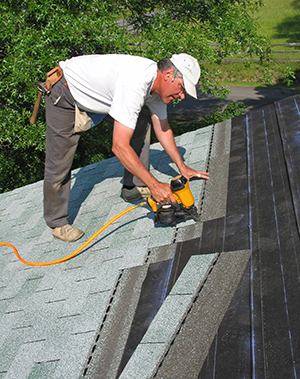 From hurricanes to hailstorms and tornadoes, our state sees it all, and your roof is your home’s first line of defense against harsh weather. When the roof fails or is compromised, it’s likely to cause catastrophic damage, displacing your family and resulting in expensive repairs.
From hurricanes to hailstorms and tornadoes, our state sees it all, and your roof is your home’s first line of defense against harsh weather. When the roof fails or is compromised, it’s likely to cause catastrophic damage, displacing your family and resulting in expensive repairs.
For more than a decade, the Insurance Institute for Business and Home Safety® (IBHS) has studied how to make homes stronger during severe weather at its Research Center in Richburg, South Carolina. At the IBHS Research Center, they test full-scale homes in realistic storm conditions, and through that extensive field research, they’ve found common roofing issues that make a roof vulnerable during severe weather. In response, IBHS developed these roofing recommendations to help homeowners who are planning a re-roofing or renovation project and want to better protect their home.
Tape It Up
Under the roof covering, sheets of wood make up what’s referred to as the roof deck. If the seams between each sheet of wood aren’t properly sealed, water can pour in through the gaps. During high winds, the roof covering can rip off, exposing the roof deck. An unsealed roof deck allows up to 60% of the rain to enter the attic, according to IBHS, and that can cause a lot of damage! Sealing the roof deck with the proper materials can reduce up to 95% of water intrusion.
Nail It Down
Using ring-shank nails, instead of common smooth nails, and decreasing the space between nails nearly doubles the strength of your roof against high winds. Keeping the roof deck secure and attached to the home is key to blocking storm pressure and keeping water from entering the home.
Lock It Down
When strong wind gets under the edges of a roof, it can rip the roof off your home. Installation methods and materials, including a wider drip edge combined with a fully adhered starter strip, create a stronger edge system that will help keep the roof secure and in place.
Review Shingle Ratings
Not all impact-resistant shingles are created equal when it comes to withstanding hail damage and protecting your home. Through years of research and testing, IBHS has developed a rating system to help homeowners evaluate shingle performance.
You, or your roofing contractor, can learn more about these roofing recommendations and all the requirements that make up the IBHS FORTIFIED Roof™ program by visiting www.fortifiedhome.org.
You’ll also want to review tax savings you may qualify for when upgrading your roof to better protect it from storm damage. South Carolina provides an income tax credit for costs incurred to retrofit a home to make it more resistant to hurricanes, floods, and windstorms. Homes located in any county of the state may qualify. The tax credit is limited to 25% of the total costs incurred, or $1,000, whichever is less. The state also allows an income tax credit up to $1,500 for State sales or use taxes paid on tangible personal property that qualifies for the residential retrofit credit. Learn more about tax incentives available to fortify homes from disaster.
Here to Help
Farm Bureau Insurance has been in the business of protecting South Carolina homes since 1955. A local Farm Bureau Insurance agent can help you review your homeowners policy and coverage options. Find a local agent near you or reach a customer service representative at 1-800-799-7500.